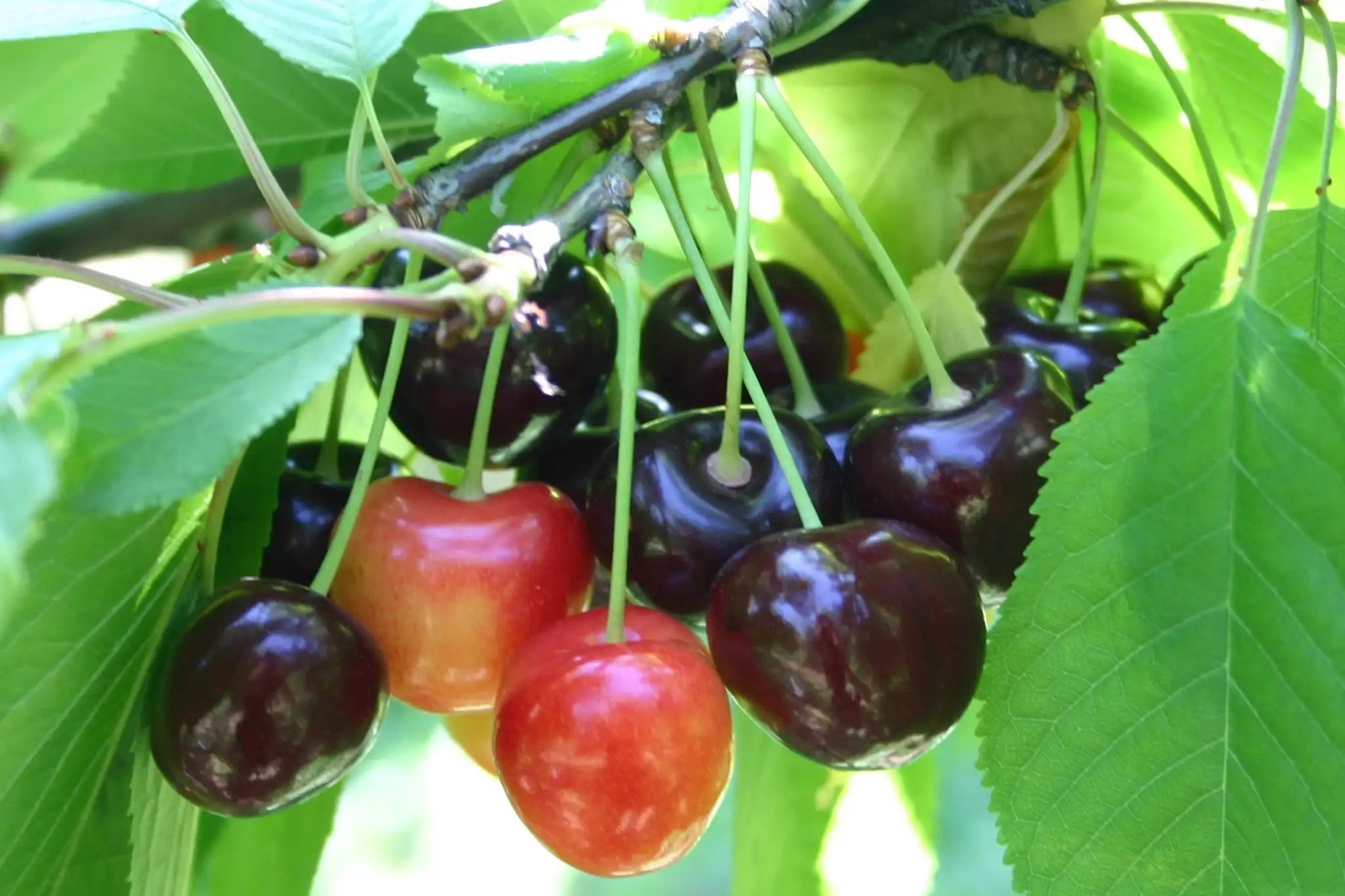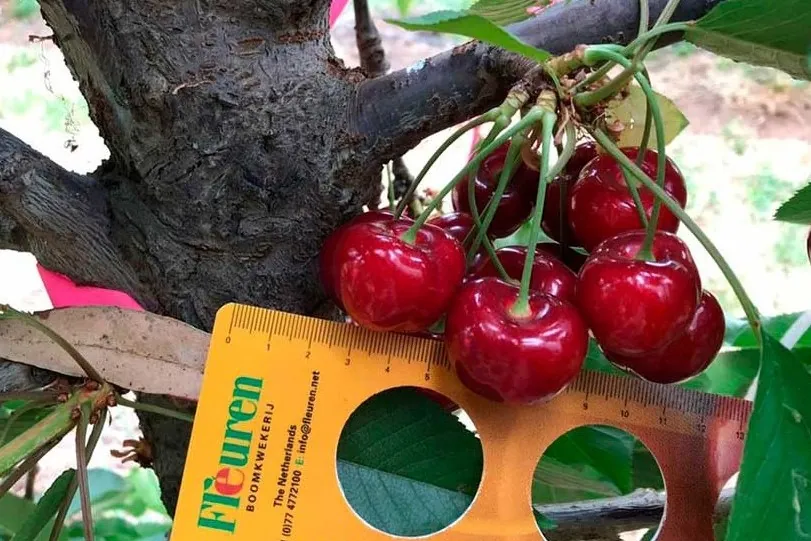OSU Extension leads the fight against X-disease in Oregon’s cherry orchards.
Cherries affected by X-disease hang on a tree. Little, light yellow or pink pointed fruit will be intermixed among normally developing fruit on a cherry tree infected with X-disease.
Credit Ashley Thompson
Oregon is the third-largest producer of sweet cherries in the United States, supplying about 11% of the U.S. market. The state’s sweet cherry industry was valued at $68.2 million (circa 63 milioni di euro) in 2022. The majority of Oregon's cherry crop is grown in the Mid-Columbia Valley, particularly in areas around Mount Hood and the Columbia River.
X-disease is a reemerging disease of sweet cherry in the Pacific Northwest. This infection makes the fruit small, flavorless and unmarketable within two years. X-disease can spread quickly in an orchard through root grafting or by leafhopper insects. Unfortunately, there is no cure.
Detection and removal strategy
OSU Extension's combined research and Extension approach led to the identification of 60 orchards infected with X-disease in Hood River County based on grower self-reporting and molecular analysis.
The only treatment is to remove infected trees, but orchardists are reluctant because of lost income. The disease spreads through root grafting or insects called vectors that transfer the disease from tree to tree. If the tree is not removed, the disease can spread quickly and decimate a whole growing region as demonstrated by the 1980s X-disease outbreak in California when cherry production almost disappeared from Napa, Sonoma and Solano counties and continues to threaten northern San Joaquin County, where most of California cherries are grown.
 Source: SL Fruit Service
Source: SL Fruit Service
The Oregon State University Extension Service, led by experts like Ashley Thompson, fruit crops specialist and assistant professor in the OSU College of Agricultural Sciences, has prioritized educating farmers about X-disease. Through hands-on workshops, presentations, and bilingual identification guides, Extension helps growers recognize and manage the disease early.
Thompson has hosted three hands-on virus and symptom identification field days for 428 attendees and presented X-disease research updates at seven non-credit teaching events for 795 attendees. These events were well received by the orchard community and led to more participation and collaboration in X-disease research by growers.
Grants and applied research
Thompson’s research and Extension program has received a combined $186,313 (circa 172.000 euro) in grant funding from the Washington Tree Fruit Research Commission, Oregon Sweet Cherry Commission and Columbia Gorge Fruit Growers to support orchardists and research the epidemiology of X-disease, replant strategies and rootstock selection to reduce its spread.
This combined research and Extension approach led to the identification of 60 orchards infected with X-disease in Hood River County based on grower self-reporting and molecular analysis. Thompson’s research into replant practices show that fumigation, a costly preplant soil preparation, is likely unnecessary, and that buying X-disease-free plants is the most important step an orchardist can take.
Thompson developed the bilingual “X-disease Phytoplasma and Little Cherry Virus Scouting and Sampling Guide” with Washington State University and authored or co-authored the OSU Extension publications “Getting Ahead of X-disease,” “How to Spot Signs of X-disease in Cherries” and “Identifying Serious Virus and Phytoplasma Symptoms in Your Cherry Orchard.”
Community outreach and education
More than 1,500 bilingual X-disease identification cards, “How to Spot Signs of X-disease in Cherries,” produced by OSU Extension, have been distributed to local farmers and farm workers in Wasco County and 1,000 OSU-WSU bilingual information packets, including a scouting and sampling guide, identification brochures and tree tags, were distributed in Oregon.
The cherry industry is a major economic driver in Oregon, providing jobs and supporting local economies. Efforts by experts like Thompson have led to increased participation and collaboration among local growers. This strengthens the community and fosters a cooperative spirit.
Educational events and resources, such as hands-on field days and bilingual identification guides, help farmers and farm workers better manage X-disease. This knowledge transfer is crucial for maintaining healthy orchards and ensuring sustainable farming practices.
Ashley Thompson
OSU College of Agricultural Sciences (USA)
Image source: Ashley Thompson
Cherry Times - Tutti i diritti riservati













